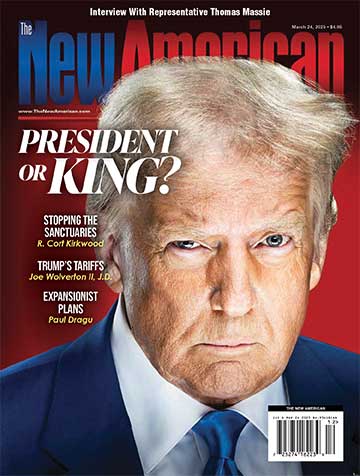
The limit on America’s national credit card may have been reached.
Other Chinese officials expressed the opinion that China should sell off much of their reserves. “The amount of foreign exchange reserves should be restricted to between 800 billion to 1.3 trillion U.S. dollars,” the Chinese government news service Xinhua reported April 23, attributing it to Tang Shuangning, chairman of the government’s multi-billion dollar investment group China Everbright Group. China’s central bank has purchased foreign currency and tightened up on domestic lending practices in recent years in order to control domestic inflation.
It’s difficult to underestimate the economic impact of the end of Chinese purchase of U.S. debt. The loose money policies of the Federal Reserve, which include near-zero interest rates and “quantitative easing” of the purchase of $600 billion in U.S. government debt securities, have inflated the amount of money in circulation dramatically since 2008. With more dollars chasing a static amount of goods, it’s only a matter of time before prices rise (or, more appropriately, the dollar falls) proportionately. The Chinese purchase of U.S. dollars served as a strong, though temporary, hedge against U.S. price inflation by taking dollars out of domestic U.S. circulation.
Even if the Chinese don’t plan to stop buying U.S. Treasuries, U.S. consumers will likely endure moderate to severe price inflation. Indeed, Americans are already getting their first taste of the coming wave of price inflation. Most Americans are aware that the price of gasoline has skyrocketed in recent months, despite no interruption in supply or major spike in market demand for oil. Oil is not alone. All of the major commodities indexes are up 30-40 percent over the past year. Gold passed $1,500 per ounce last week, and silver has increased from $9 to $47 per ounce since 2008. Other commodities, from corn to wheat, have all seen bull markets against the dollar over the past year.
The rise in commodities prices is part of a recent flight from what many investors see as a depreciating dollar. “What we’re seeing is a flight back into risky assets across the board, and that’s mostly coming at expense of the U.S. dollar,” Omer Esiner, chief market analyst at Commonwealth Foreign Exchange in Washington, told the Wall Street Journal April 20. In an economy with currency inflation, investments in fixed dollar figures lose value, even while the nominal dollar figures increase.
The flight from dollars happened in the 1970s era of stagflation, legendary investor Jim Rogers chairman of Rogers Holdings told Bloomberg.com February 28. “In the 70s, most stocks did badly. The only stocks that did well were commodities stocks. That’s what’s going to happen again.” Canada’s Financial Post also agreed April 20 that “the road ahead for the world’s reserve currency will likely continue to to be rocky until the U.S. Federal Reserve gives some hint the U.S. economy is robust enough to handle an interest rate hike.” But few analysts see the Federal Reserve increasing interest rates any time soon.
China’s external debt, the debt it owes to other nations, also increased some 28 percent last year. The difference between Chinese and U.S. external debt is that more than 70 percent of China’s debt is commercial loans, i.e., loans to create or expand businesses. Much of U.S. external debt is government debt or consumer debt. Moreover, U.S. external debt equals nearly 100 percent of the nation’s GDP, while Chinese debt remains in the single digits of its GDP.
Photo of Zhou Xiaochuan: AP Images




